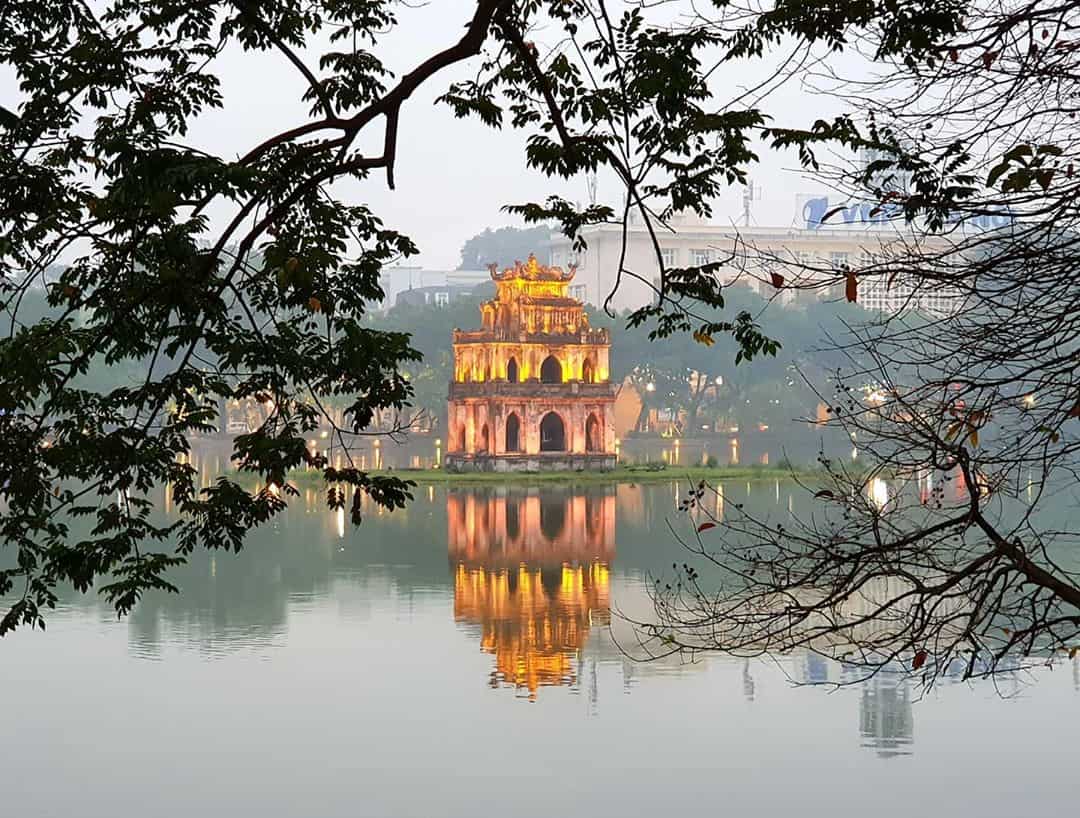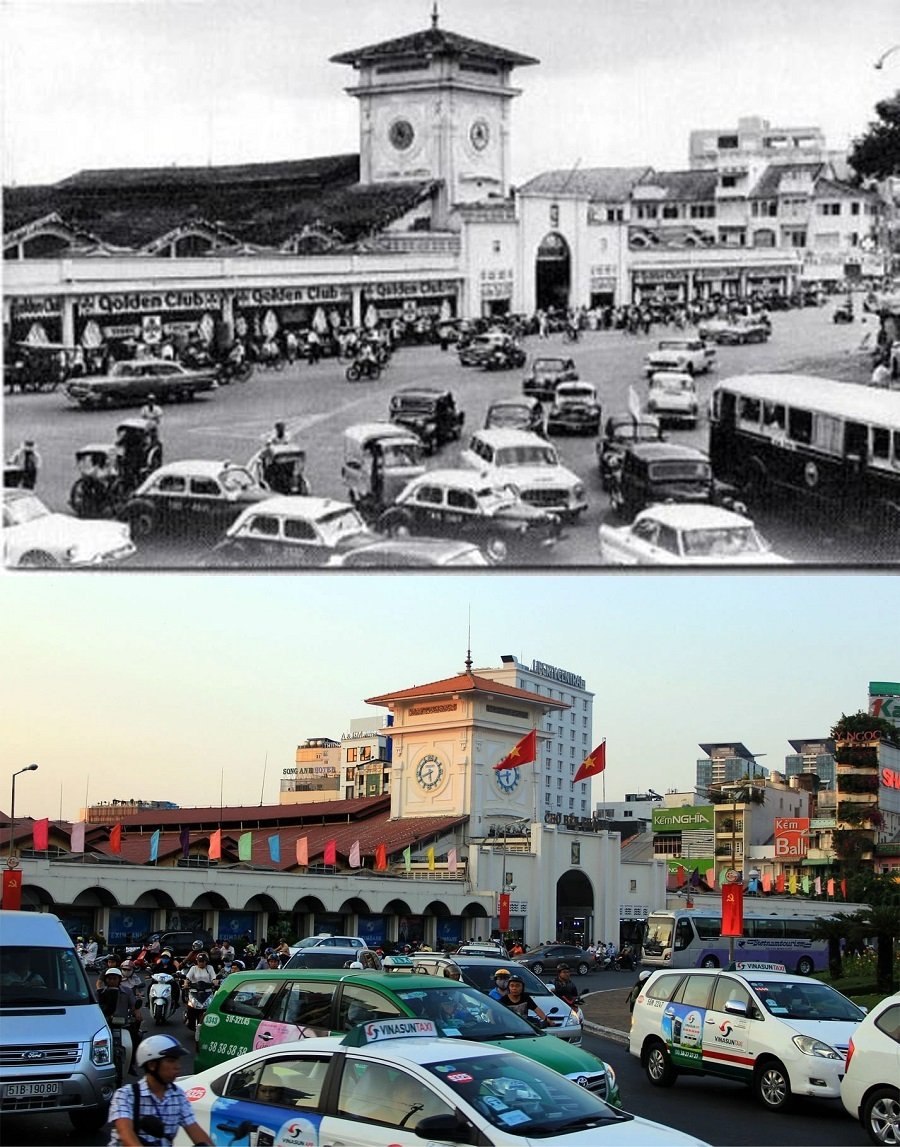
The heroic history of Vietnam has fascinated people worldwide for generations. The country's relentless struggles for independence, along with profound social and cultural transformations, have shaped its unique identity over time. Exploring Vietnam's rich past provides you with a deeper appreciation for its vibrant culture and the indomitable spirit of its people.
1. A brief history of Vietnam through major periods
The timeline history of Vietnam can be divided into several key periods as follows:
1.1. The period of formation
How old is Vietnam? The ancient history of Vietnam can be traced back to the 7th century BC, when the Van Lang kingdom was established. This marked the development of the Red River civilization, characterized by an advanced culture symbolized by the Dong Son bronze drum.
Throughout its history, Vietnam faced numerous wars and uprisings against foreign powers, beginning with the resistance against the Qin dynasty in the 3rd century BC.
For over a thousand years, Vietnam came under the rule of various Chinese dynasties. Despite these challenges, Vietnam continued to grow and evolve, progressing through different periods such as Van Lang, Au Lac, Van Xau, Dai Co Viet, and Dai Viet.

1.2. The period of renaissance and development
During the Ly (1009-1226), Tran (1226-1400), Ho (1400-1407), and Le So (1428-1527) dynasties, Vietnam experienced a period of renaissance and development, often referred to as its golden age. Notable advancements were made in agriculture, irrigation, and the flourishing of traditional crafts.
Additionally, an important milestone in the history of the Vietnamese language occurred during this time with the introduction of Nom scripts. These distinct writing systems emerged from the reformulation of Chinese Han scripts, leaving a lasting impact on the history and culture of Vietnam.
1.3. The period of imperialism and colonialism
The 19th century was a period of imperialism and colonialism in the history of Vietnam, as Western capitalist nations exerted their dominance over the country.
The French gradually gained control over Vietnam through missionary activities and trade, making it the first time Vietnam had to confront the invasion of a Western power.
In response, some Vietnamese intellectuals recognized the necessity of reforms to revive the country and preserve its independence. However, the Nguyen dynasty resisted many reform initiatives, leading Vietnam to become a semi-feudal colony for nearly a century, from 1858 to 1945.

1.4. The era of peace, unification, and national construction
The struggle against French colonizers in Vietnam involved 2 main forces: the middle class and the working class, led by the Communist Party of Vietnam. Through immense determination and sacrifice, the Democratic Republic of Vietnam was established with the Declaration of Independence on September 2, 1945.
Subsequently, Vietnam faced another formidable conflict from 1954 to 1975, this time against the United States, as they fought for national liberation and unity. The war culminated in a historic victory with the spring offensive in 1975, marking the beginning of a new era characterized by peace, unity, and national development in the history of Vietnam.
In 1986, Vietnam implemented the Doi Moi (reform) policy, a significant turning point in the history of modern Vietnam. This policy aimed to revitalize the economy, leading to ongoing growth and progress in the country.
>>> Discover the Vietnamese language and fascinating facts about its linguistic features!
2. The pivotal role of President Ho Chi Minh in the military history of Vietnam
President Ho Chi Minh is widely recognized as a prominent figure in the history of Vietnam. As the leader of the Communist Party of Vietnam, he led the fight for independence and freedom from foreign control.
During his lifetime, Ho Chi Minh led the Vietnamese people in a long and challenging struggle against French colonialism and American intervention. His strong leadership and inspiring vision motivated millions of Vietnamese people to fight for their country's rights and sovereignty.
President Ho Chi Minh's vision and guidance not only secured Vietnam's independence but also laid the foundation for its political, economic, and social development. His enduring legacy carries immense meaning for the Vietnamese people, serving as a constant source of inspiration and pride.

In 1976, the Vietnamese people paid tribute to President Ho Chi Minh's significant contributions by renaming Saigon to Ho Chi Minh City.
Throughout the country, numerous landmarks have been established to honor his legacy. These include the iconic Ho Chi Minh Mausoleum, Ho Chi Minh Museum Hanoi, Ho Chi Minh Museum Da Nang, Ho Chi Minh's Stilt House, Kim Lien Relic Site, and Pac Po Relic Site. Each of these sites stands as a powerful testament to the lasting influence and profound impact of President Ho Chi Minh in shaping the history of Vietnam.
>>> Find out where is Ho Chi Minh City on the map of Vietnam and start planning your next adventure today!
3. Where to go to learn more about the history of Vietnam?
To delve into the fascinating history of Vietnam, be sure to include the following significant historical sites in your travel itinerary:
3.1. Hung Temple – one of the most famous Vietnam historical sites
Hung Temple, one of the most famous historical places in Vietnam, holds immense cultural and historical significance.
Located in Phu Tho province, this sacred complex is dedicated to the Hung Kings, the legendary founders of the Vietnamese nation. The temple is believed to be the final resting place of these revered kings, attracting pilgrims and visitors from far and wide.
The annual Hung Temple Festival, held on the 10th day of the third lunar month, is a grand celebration where people pay homage to their ancestors and participate in traditional rituals. Exploring the temple grounds offers a glimpse into Vietnam's ancient roots and deep cultural heritage.

3.2. Co Loa Citadel
Co Loa Citadel, located in Dong Anh district, Hanoi, is an iconic historical site that holds great importance in the history of Vietnam. It was built during the reign of King An Duong Vuong in the 3rd century BC and served as the capital of the Au Lac kingdom.
It is considered one of the most impressive citadels in Southeast Asia, showcasing the ancient engineering and architectural skills of Vietnamese people. Exploring the expansive citadel grounds allows you to immerse yourself in a bygone era, where you can uncover stories of power, conquest, and cultural heritage.
3.3. Hoa Lu Ancient Capital
Located in Ninh Binh Province, Hoa Lu Ancient Capital is a historical site that takes visitors back to the time of the Dinh and Le dynasties in Vietnam. This ancient capital served as the political and economic center of the country during the 10th and 11th centuries.
Today, Hoa Lu showcases the remnants of royal palaces, temples, and other structures that reflect the grandeur of the bygone era. Exploring the site, visitors can marvel at the intricate architectural details, serene landscapes, and learn about the significant historical events that shaped the history of Vietnam.

3.4. My Son Sanctuary
Nestled amidst the lush jungles of Quang Nam province, My Son Sanctuary, an integral part of the history of Vietnam, is an awe-inspiring archaeological site that showcases the ancient Champa civilization.
Dating back to the 4th - 13th centuries, this UNESCO World Heritage Site is a testament to the rich cultural heritage of Vietnam. The sanctuary consists of a complex of Hindu temple towers, intricately adorned with exquisite carvings and sculptures.
As you wander through the ruins, you will be transported back in time, marveling at the architectural prowess and spiritual significance of this ancient civilization.
3.5. Hue Citadel – among the must-visit historical places in Vietnam
Hue Citadel, located in the heart of the beautiful city of Hue, is a must-visit historical site in Vietnam. This impressive citadel was the capital of the Nguyen Dynasty from 1802 to 1945.
Surrounded by strong walls and moats, it encompasses a large complex of palaces, temples, and royal tombs. The citadel's architecture reflects a unique fusion of Vietnamese and European influences.
Exploring the Hue Historic Citadel offers a fascinating glimpse into Vietnam's imperial history, allowing visitors to immerse themselves in the grandeur of the Nguyen dynasty.

3.6. Ho Dynasty Citadel
Ho Dynasty Citadel, an extraordinary site that holds a significant place in the history of Vietnam, is located in Thanh Hoa Province. Built during the 14th century, this citadel served as the capital of the Ho dynasty, a short-lived but notable dynasty in Vietnamese history.
Ho Dynasty Citadel stands out for its exceptional architectural design and ingenious construction techniques, showcasing the mastery of Vietnamese builders of that era. Surrounded by picturesque landscapes, exploring the citadel allows you to appreciate its majestic beauty and delve into the captivating history of the Ho dynasty.
3.7. Con Dao Prison
Con Dao Prison, situated on Con Dao Island, holds a significant place in the history of Vietnam. It served as a detention center for political prisoners during the French colonial era and the Second Indochina War. The prison's brutal conditions and inhumane treatment reflect the hardships endured by those fighting for independence and freedom. Today, Con Dao Prison stands as a solemn reminder of the nation's past, allowing visitors to delve into the struggles faced by Vietnamese revolutionaries.

3.8. War Remnants Museum
War Remnants Museum is a significant destination in Vietnam that provides a sobering look into the impact of war.
Located in Ho Chi Minh City, this museum displays artifacts, photographs, and documents from the Second Indochina War and other conflicts. It offers visitors a chance to witness the harsh realities of war, including the effects of Agent Orange.
Exploring the museum provides visitors with an educational experience, deepening their understanding of the history of Vietnam and promoting a message of peace. It serves as a powerful reminder to value peace and work towards a more harmonious world.
3.9. Cu Chi Tunnels – an important location in the history of Vietnam
Cu Chi Tunnels, situated near Ho Chi Minh City, hold immense historical significance in Vietnam. These tunnels played a crucial role during the Second Indochina War, serving as an underground network used by the Viet Cong soldiers.
Exploring the Cu Chi Tunnels offers visitors a unique opportunity to witness the resilience and resourcefulness of Vietnamese people during the war. You can crawl through narrow passageways, explore hidden trapdoors, and learn about the ingenious methods employed by the soldiers to survive and carry out military operations.

3.10. Independence Palace
The Independence Palace, located in Ho Chi Minh City, is a historically significant site that played a pivotal role in the history of Vietnam. Serving as the official residence and workplace of South Vietnamese President Nguyen Van Thieu, the palace witnessed several pivotal events, including the signing of the Second Indochina War's ceasefire agreement, which marked the end of the conflict.
Today, it stands as a meticulously preserved museum, offering visitors an interesting journey into Vietnam's political and cultural past. Exploring the palace, you can immerse yourself in the various exhibits that showcase the rooms and artifacts used by the South Vietnamese government, the iconic tanks that crashed through the gates in 1975, and much more.

When planning your trip to explore the natural beauty and rich history of Vietnam, it is important to consider the best time to visit. Vietnam is a country that can be explored year-round, as it offers unique experiences in every season. With its diverse climate, different regions have varying weather patterns, making it possible for exploration throughout the year.
While immersing yourself in the charm of Vietnam, don't miss the chance to enjoy the exceptional resort and hotel services provided by Vinpearl. Whether you are in Phu Quoc, Nha Trang, Hoi An, Da Nang, or Ha Long, Vinpearl offers a range of facilities and amenities to enhance your stay. From world-class accommodations and exquisite dining options to rejuvenating spa experiences, gyms, and vibrant bars, Vinpearl ensures that your Vietnam travel journey is truly unforgettable.


>>> Book rooms in Vinpearl Phu Quoc, Vinpearl Nha Trang, Vinpearl Resort & Golf Nam Hoi An, Vinpearl Resort & Spa Ha Long to enjoy the ultimate comfort during your Vietnam trip!
The captivating history of Vietnam is a tale of resilience, struggle, and triumph that leaves a lasting impact on its present and future. It serves as a wellspring of inspiration and pride for generations to come. To truly grasp the essence of Vietnam's remarkable journey, be sure to include the mentioned historical landmarks above in your itinerary during your upcoming trip.
>>> Book rooms in Vinpearl Phu Quoc, Vinpearl Nha Trang, Vinpearl Resort & Golf Nam Hoi An, Vinpearl Resort & Spa Ha Long to treat yourself to an enjoyable stay during your trip!
>>> Book voucher, combo, tour to Phu Quoc, Nha Trang, Hoi An, Da Nang to explore these destinations to the fullest with amazing deals!
























